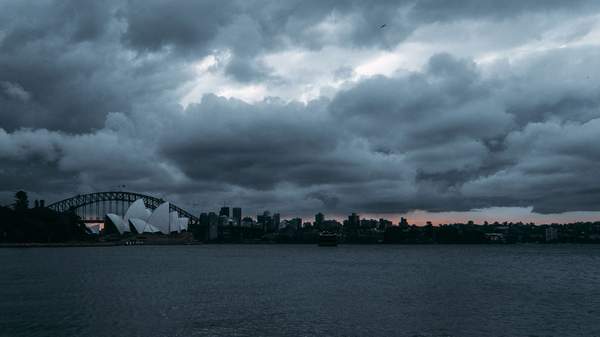Overview
The last thing any Australian wants this summer is to spend more time indoors, but it looks like the weather has other plans. It already appears that most of the east coast will see out spring with rain and clouds, and they're not the only wet conditions in much of the country's immediate future — with the Bureau of Meteorology's declaring that a La Niña weather event has developed in the Pacific Ocean.
When the weather phenomenon hits Australia, it usually means soggier times — and that's what BOM is forecasting for eastern, northern and central parts of the country. And, cooler temperatures, too, so perhaps this won't be the hot vax summer we'd all been hoping for. (Obviously, exactly what constitutes 'cooler' needs to be put in context of Australia's usually toasty summer weather; we aren't quite in for frosty conditions.)
In a statement, Bureau's Head of Operational Climate Services Dr Andrew Watkins explained that La Niña "increases the chance of cooler than average daytime temperatures for large parts of Australia and can increase the number of tropical cyclones that form."
And, in a revelation that won't surprise anyone who's had a wet week or so — Sydney and Brisbane have both seen rain — Dr Watkins advises that "La Niña is also associated with earlier first rains of the northern wet season, as we've observed across much of tropical Australia this year."
The Bureau has declared that a #LaNiña has developed in the tropical Pacific. Typically during La Niña, there is above average rainfall for eastern, northern and central parts of Australia. pic.twitter.com/4KJeKsVI6A
— Bureau of Meteorology, Australia (@BOM_au) November 23, 2021
Australia last experienced La Niña last spring and summer, so we're getting back-to-back stints of sodden weather; however, that's not out of the ordinary. "Around half of all past events returning for a second year," Dr Watkins said.
In good news, the 2021–22 La Niña might have a weaker effect locally than last year's event — and definitely isn't predicted to be as strong as the weather phenomenon proved between 2010–12.
Having an umbrella handy is clearly smart advice over not just the coming days — with showers, rain and/or storms forecast for all Aussie capitals except Perth — but for the summer ahead. It's smart Aussie summer advice in general anyway, but particularly so this year.
La Niña forms part of a naturally occurring shift in ocean temperatures and weather patterns along the equator in the Pacific Ocean — a cycle known as the El Niño-Southern Oscillation (ENSO). When it occurs, waters in the central or eastern tropical parts of the Pacific become cooler than normal, and persistent southeast to northwesterly winds get stronger in the Pacific's tropical and equatorial regions. Also, clouds shift to the west — so, closer to Australia.
For more information about the Bureau of Meteorology's La Nina declaration, head to the BOM website.
